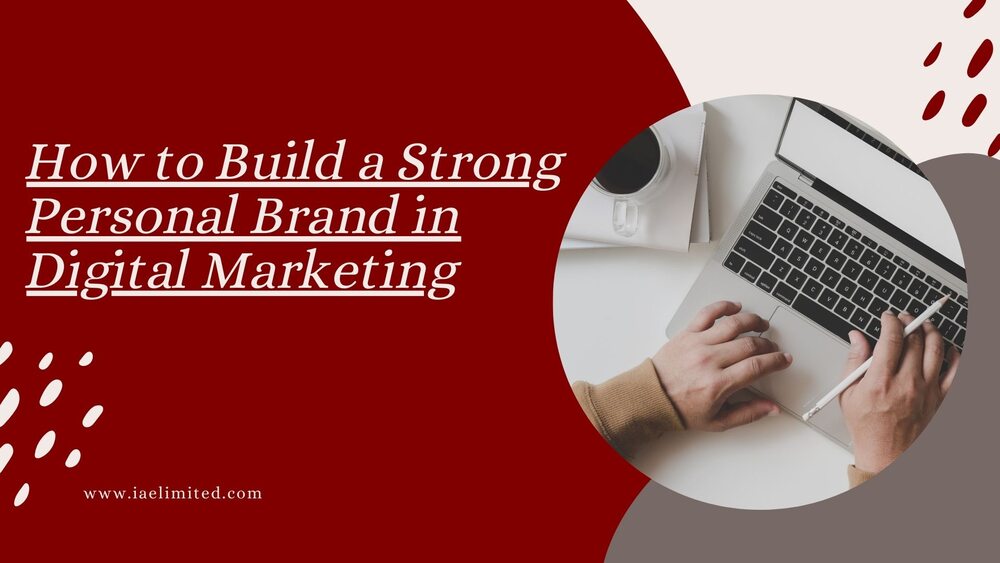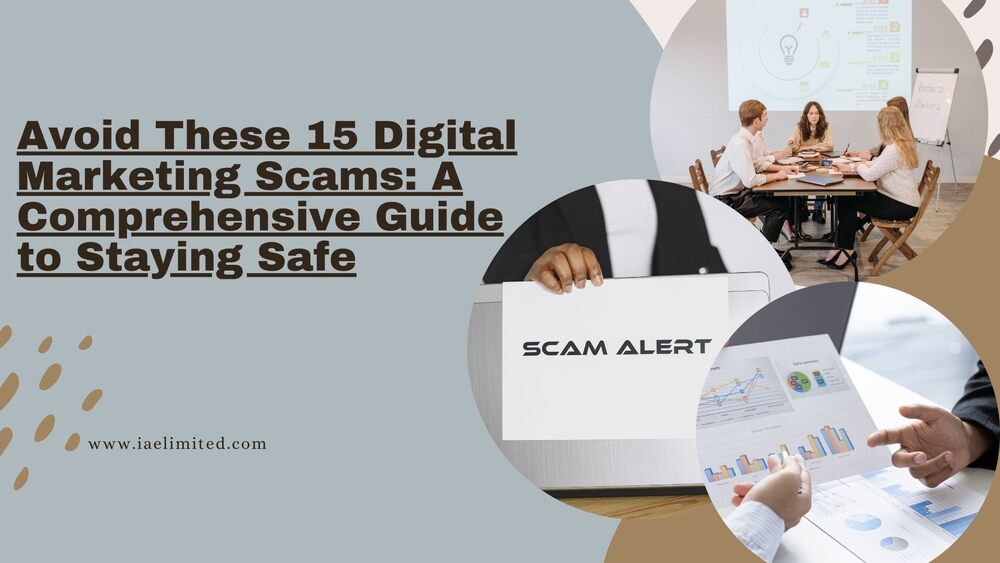
Building a strong Personal Brand in Digital Marketing is crucial in the digital world. It not only sets you apart from the competition but also enhances your career opportunities.
Whether you’re just starting out or looking to refine your existing brand, this comprehensive guide will help you create a personal brand that stands out and resonates with your audience.
Foundations of Personal Branding
Table of Contents
Identifying Your Unique Value Proposition (UVP)
To build a strong personal brand, you first need to understand what makes you unique. Your Unique Value Proposition (UVP) is the core of your brand. It’s what differentiates you from others in the digital marketing field.
Analyzing Your Strengths and Skills: Start by listing your skills and strengths. Ask yourself questions like, “What are my greatest achievements?” and “What skills do I excel at?” For example, if you’re great at social media management, emphasize this in your branding.
Understanding Your Audience’s Needs: Research your target audience to find out what they need. What are their pain points and challenges? Tailor your UVP to address these needs. For instance, if your audience struggles with SEO, position yourself as an expert in SEO strategies.
Defining Your Personal Brand Vision and Mission
Your vision and mission give direction to your brand and align it with your goals.
Setting Long-Term Goals: Think about where you want to be in five years. Are you aiming for a leadership role or planning to start your own agency? Define clear, achievable goals that guide your branding efforts.
Aligning with Digital Marketing Trends: Stay updated with the latest trends in digital marketing. Incorporate these trends into your brand vision. For example, if AI in marketing is trending, consider how you can leverage this in your branding.
Crafting Your Personal Brand Identity
Developing a Consistent Brand Message
Consistency is key to a strong personal brand. Your brand message should be clear and uniform across all platforms.
Creating a Unique Value Statement: Craft a statement that encapsulates your UVP and mission. This statement should be short, memorable, and reflect what you stand for. For example, “Helping businesses grow through innovative SEO strategies.”
Ensuring Consistency Across Platforms: Your message should be the same whether you’re on LinkedIn, Twitter, or your personal website. Consistency helps build recognition and trust with your audience.
Designing Visual Brand Elements
Visual elements play a significant role in your personal brand’s identity.
Choosing Colors, Fonts, and Logos: Select colors and fonts that represent your brand’s personality. For instance, a vibrant color palette might convey creativity, while a more subdued palette could signify professionalism. Design a logo that is simple yet memorable.
Crafting an Engaging Brand Aesthetic: Your overall aesthetic should be cohesive and aligned with your brand message. This includes the design of your website, social media profiles, and any marketing materials.
Building Your Online Presence
Creating and Optimizing Your Website
Your website is often the first impression people have of you, so make it count.
Essential Features for Personal Branding: Ensure your website includes a professional bio, a portfolio of your work, and clear contact information. A blog section where you share insights can also help establish your expertise.
SEO Best Practices for Personal Websites: Optimize your website for search engines to increase its visibility. This includes using relevant keywords, optimizing images, and ensuring your site loads quickly. For more detailed SEO strategies, check out this SEO Guide.
Leveraging Social Media Platforms
Social media is a powerful tool for building and maintaining your personal brand.
Choosing the Right Platforms for Your Brand: Identify which platforms your target audience uses most. LinkedIn might be ideal for B2B marketing, while Instagram or TikTok could be better for B2C.
Building and Growing a Follower Base: Engage with your audience regularly. Post valuable content, respond to comments, and participate in conversations. Use hashtags and collaborate with other influencers to reach a wider audience.
Content Creation and Strategy
Content is central to personal branding. It showcases your expertise and provides value to your audience.
Types of Content to Share: Share a mix of content types, including blog posts, videos, and infographics. For example, write blog posts about industry trends, create video tutorials, or design infographics that highlight key statistics.
Developing a Content Calendar: Plan your content in advance using a content calendar. This helps ensure consistency and allows you to strategically align your content with your branding goals and key dates. Check out this article for more content on how to create a good and standard content calendar.
Networking and Relationship Building
Engaging with Industry Influencers
Networking with influencers can elevate your personal brand.
Strategies for Effective Networking: Reach out to influencers in your industry by commenting on their posts, sharing their content, and engaging in discussions. Attend industry events and webinars to connect in person or virtually.
Building Meaningful Partnerships: Collaborate on projects, guest posts, or joint ventures. These partnerships can expand your reach and enhance your credibility.
Participating in Digital Marketing Communities
Being active in relevant communities helps build your reputation and network.
Joining Forums and Online Groups: Participate in forums and groups related to digital marketing. Offer valuable insights, answer questions, and engage with other members.
Attending Virtual Events and Webinars: Attend events where you can learn and connect with others in your field. These events are great opportunities to showcase your expertise and network with peers.
Showcasing Your Expertise
Publishing Thought Leadership Content
Thought leadership content establishes you as an expert in your field.
Writing Guest Posts and Articles: Contribute to industry publications or blogs. This not only builds your credibility but also exposes you to a broader audience.
Speaking at Industry Conferences and Panels: Share your knowledge at conferences and panels. This positions you as an authority and can lead to more opportunities.
Sharing Case Studies and Success Stories
Case studies and success stories demonstrate your capabilities and results.
Documenting Your Achievements: Create detailed case studies that highlight your successful projects and outcomes. Share these stories on your website and social media to showcase your expertise.
Using Case Studies to Build Credibility: Case studies provide proof of your skills and successes. They help build trust with potential clients and employers by showing real-world results.
Measuring and Refining Your Brand
Tracking Your Brand Performance
Regularly measuring your brand’s performance helps you understand what’s working and what needs improvement.
Analyzing Website and Social Media Metrics: Use tools like Google Analytics and social media insights to track your performance. Look at metrics such as website traffic, engagement rates, and follower growth.
Using Analytics Tools for Insights: Leverage analytics tools to gain insights into your audience’s behavior and preferences. This data helps you refine your strategies and improve your brand’s effectiveness.
Adjusting Your Strategy Based on Feedback
Feedback is crucial for continuous improvement.
Collecting and Interpreting Feedback: Gather feedback from your audience, peers, and mentors. Analyze this feedback to identify areas for improvement and make necessary adjustments.
Making Data-Driven Improvements: Use the insights from your analytics and feedback to refine your brand strategy. Adjust your content, messaging, and engagement tactics based on what you learn.
Overcoming Common Personal Branding Challenges
Managing Negative Feedback and Criticism
Handling criticism effectively is vital for maintaining a strong personal brand.
Strategies for Addressing Criticism: Respond to negative feedback professionally and constructively. Address concerns without getting defensive, and use the feedback as an opportunity to improve.
Turning Negative Feedback into Opportunities: View criticism as a chance to enhance your brand. Use it to identify areas for growth and demonstrate your commitment to improvement.
Avoiding Common Pitfalls in Personal Branding
Being aware of common pitfalls helps you navigate challenges more effectively.
Maintaining Authenticity: Ensure your brand reflects who you truly are. Authenticity builds trust and helps you connect with your audience on a deeper level.
Balancing Personal and Professional Life: Strive for a balance between your personal and professional life. This balance helps you maintain a positive brand image and avoid burnout.
Future-Proofing Your Personal Brand
Adapting to Industry Changes
The digital marketing landscape is constantly evolving.
Staying Updated with Digital Marketing Trends: Keep abreast of industry trends and adapt your strategies accordingly. Follow industry blogs, attend webinars, and participate in relevant courses.
Evolving Your Brand with Market Shifts: Be flexible and willing to pivot your brand as market conditions change. This adaptability ensures that your brand remains relevant and effective.
Continuing Professional Development
Ongoing learning is essential for long-term success.
Pursuing Ongoing Education and Certifications: Invest in courses and certifications that enhance your skills and knowledge. This commitment to learning helps you stay ahead in the industry.
Expanding Your Skill Set and Knowledge Base: Continuously seek opportunities to broaden your expertise. This not only improves your personal brand but also keeps you competitive in the digital marketing field.
In Conclusion
Building a strong personal brand in digital marketing requires a strategic approach. By defining your UVP, crafting a consistent brand message, and leveraging online platforms, you can establish a powerful brand identity.
Networking, showcasing your expertise, and continuously refining your strategy will help you stay relevant and successful. Start taking these steps today to build a brand that stands out and drives your career forward.

FAQs
What are the first steps to start building a personal brand?
Begin by identifying your unique value proposition and defining your brand’s vision and mission. Create a consistent brand message and design visual elements that represent your brand.
How can I maintain consistency in my personal brand?
Ensure that your brand message and visual identity are uniform across all platforms. Regularly review your content and branding materials to maintain consistency.
What metrics should I track to measure my personal brand’s success?
Track metrics such as website traffic, social media engagement, follower growth, and content performance. Use these metrics to assess and refine your brand strategy.
How do I handle negative feedback about my personalbrand?
Respond to negative feedback professionally and constructively. Use it as an opportunity to improve and address any concerns raised.
What are the best practices for adapting my personal brand over time?
Stay updated with industry trends, be flexible in your approach, and continue investing in your professional development. Regularly review and adjust your branding strategies based on market shifts and feedback.
By following these guidelines, you’ll be well on your way to building a strong and enduring personal brand in digital marketing.





